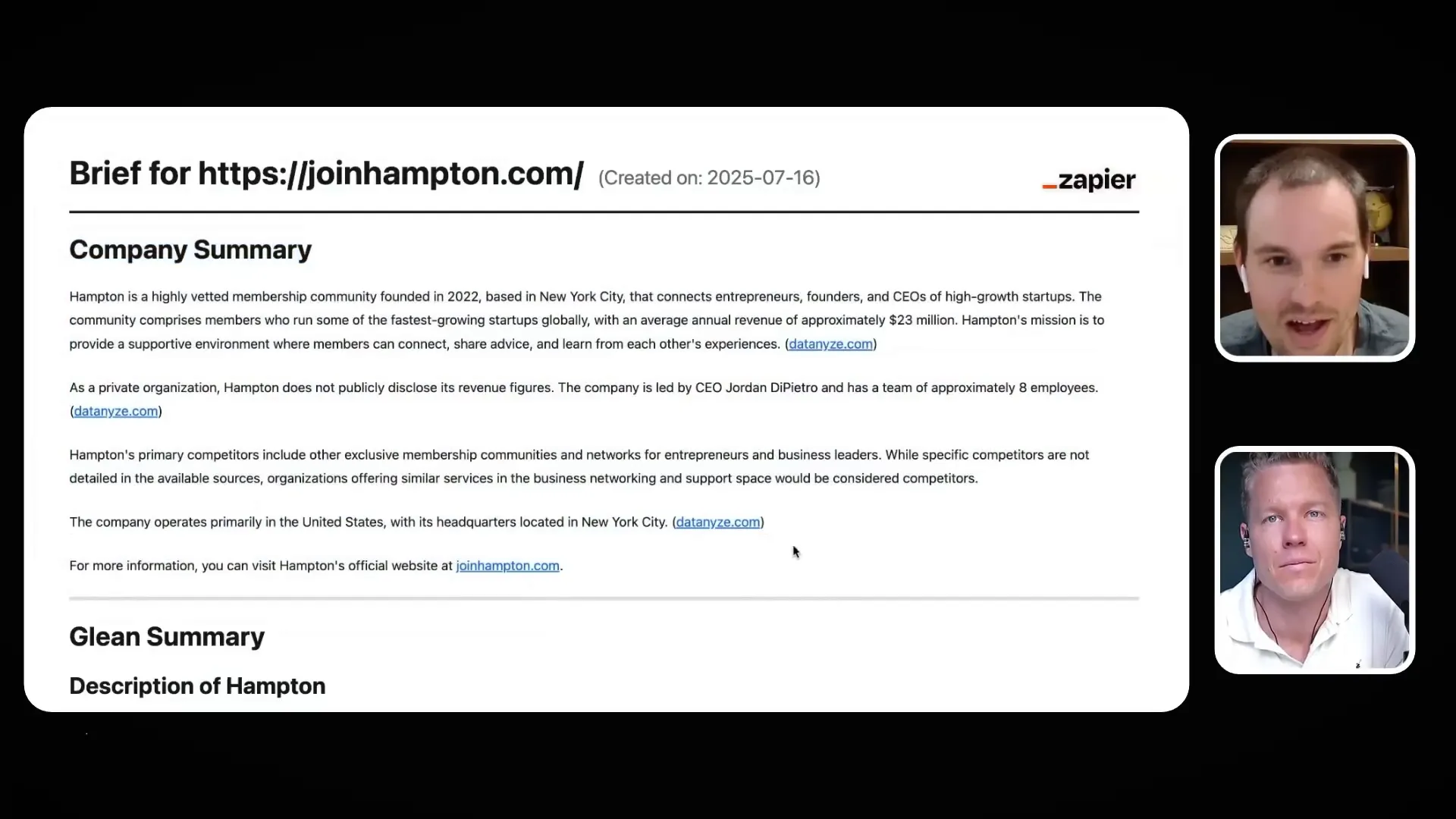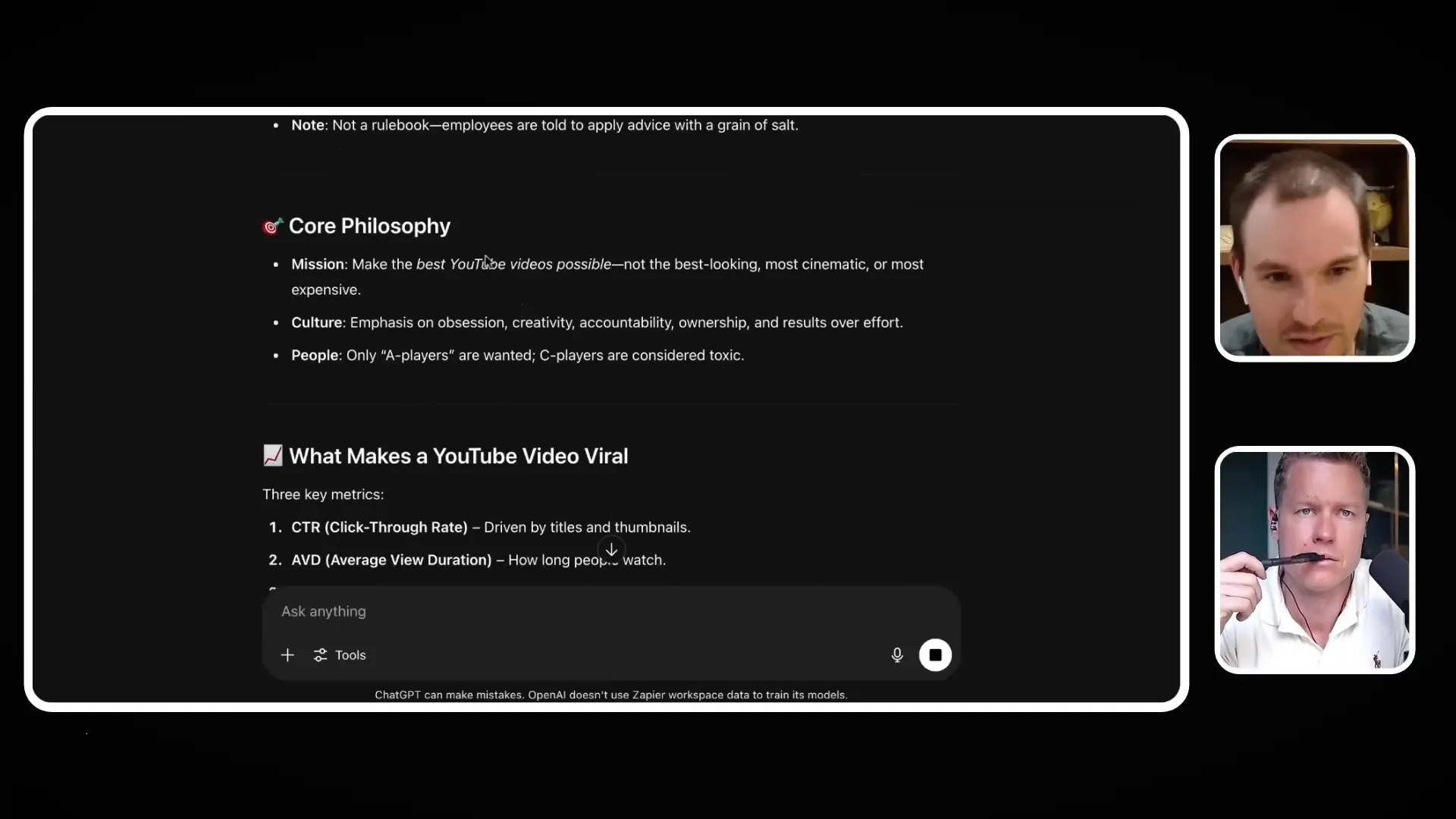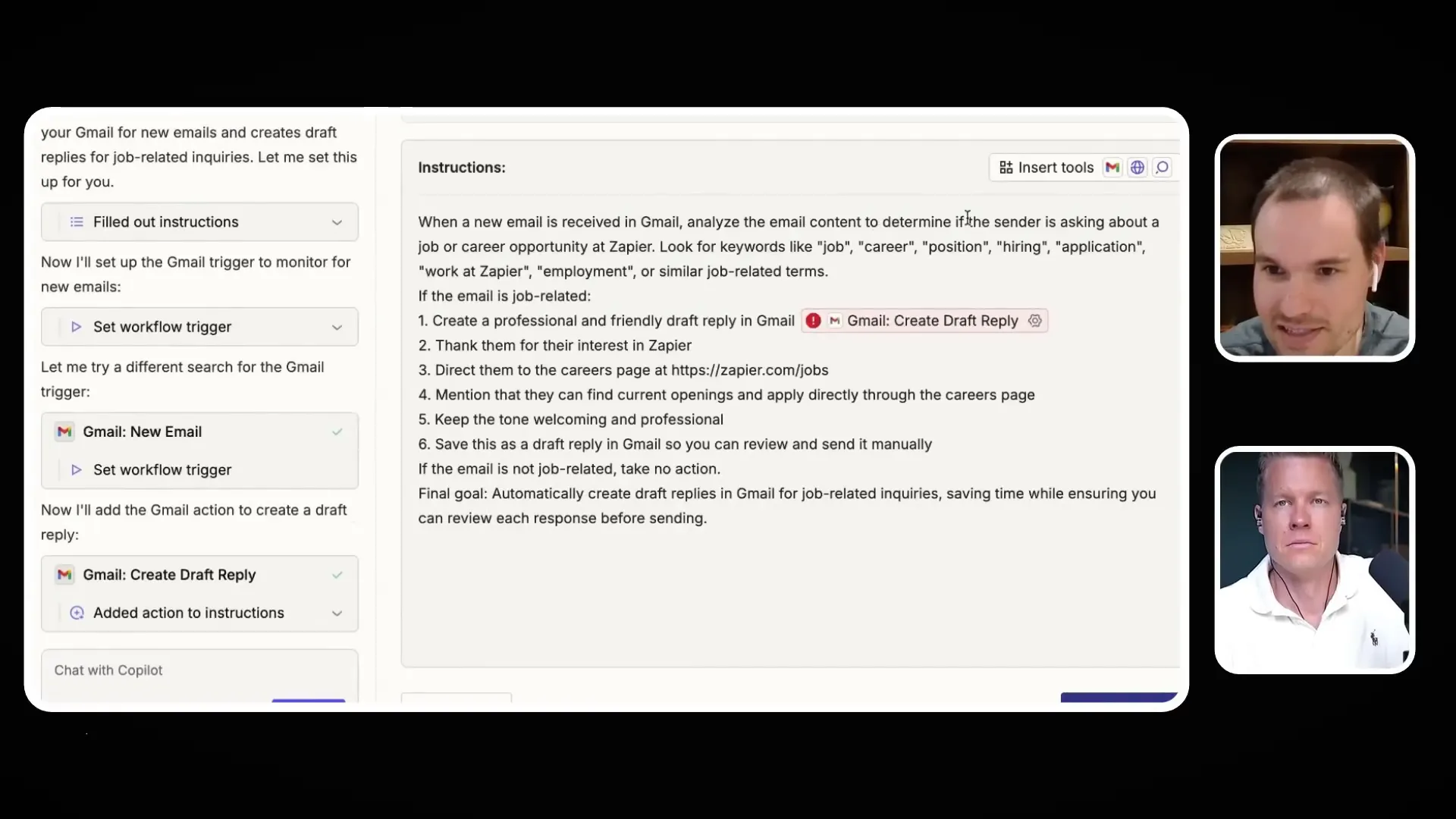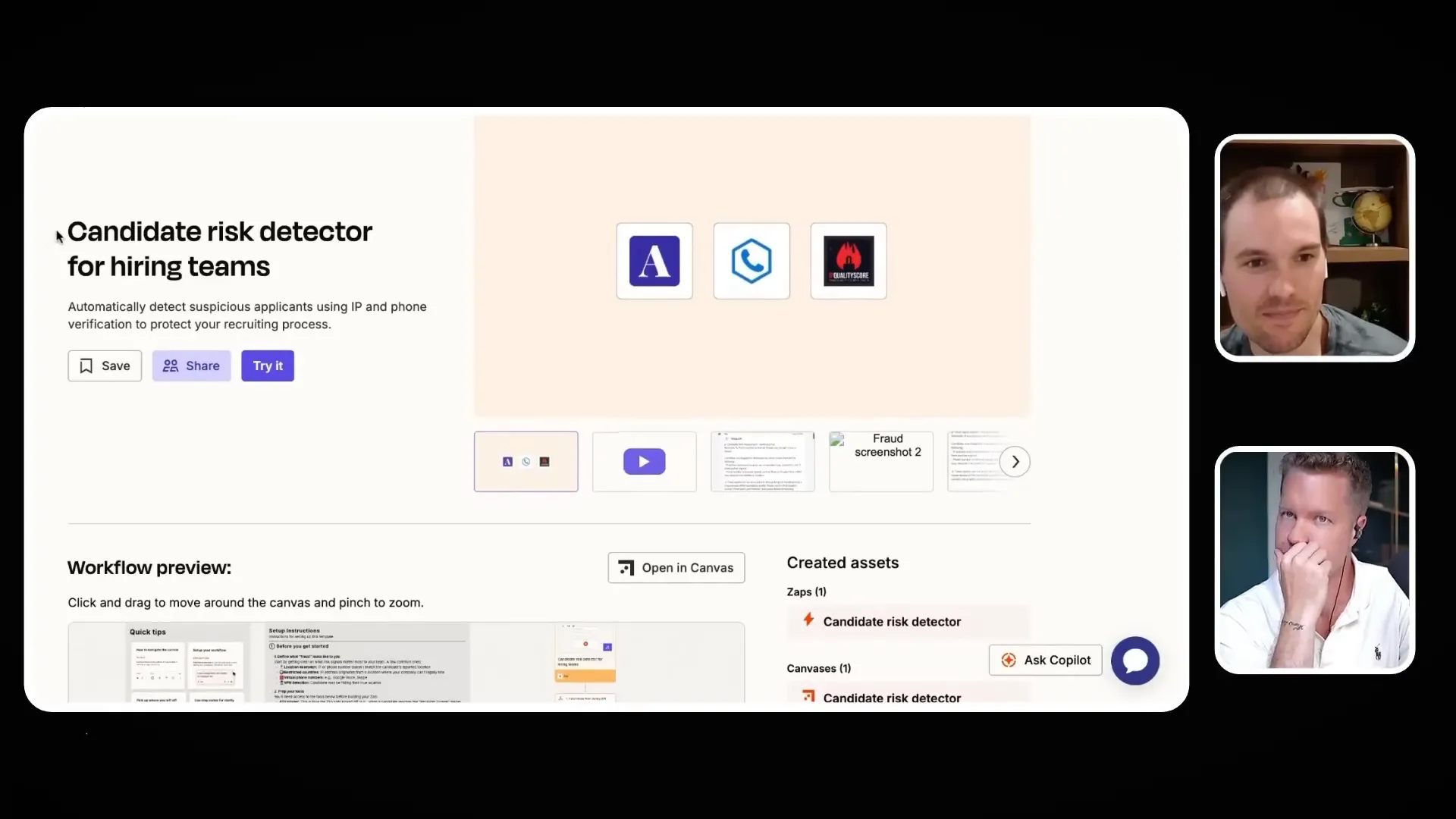How I Automated 20 Hours of Work With AI Agents: A Deep Dive Into AI for Businesses
Join Rico Glover, Chief Evangelist of AI for AI 101, as we explore how Wade Foster, the founder of Zapier, revolutionized his workflow by building AI Agents that save him over 20 hours a week. If you’re a CEO, middle manager, or anyone in a leadership position, understanding AI is no longer optional — it’s essential. Whether you want to streamline your workforce or secure your position in an evolving corporate landscape, learning how to leverage AI for businesses is the key.
In this detailed article, I’ll walk you through how Wade Foster, a pioneer in automation, uses AI agents to transform his personal productivity and business operations. Drawing from my conversations with Wade and his hands-on demonstrations, I’ll break down practical AI use cases, how to implement them, and why your company cannot afford to ignore AI technologies anymore.
Table of Contents
- From Zapier’s Humble Beginnings to AI Powerhouse
- Why AI for Businesses? The Shift Towards Automation and Intelligence
- Practical AI Use Cases to Save Hours Every Week
- Understanding Model Context Protocol (MCP) and AI Orchestration
- Scaling AI Adoption Across a 700+ Employee Company
- Advanced AI Applications: Fraud Detection and Beyond
- Building and Sharing AI Agents: The Future of Automation Platforms
- Key Takeaways: Why You Must Embrace AI for Businesses Now
- Frequently Asked Questions (FAQ)
- Final Thoughts
From Zapier’s Humble Beginnings to AI Powerhouse
Zapier is a company that started with a bootstrapped mindset and grew into a business generating nine figures in revenue. Wade Foster, its founder and CEO, raised a modest seed round of $1.2 million but didn’t take traditional venture capital funding afterward. Despite this, Zapier’s valuation has soared to billions, proving that efficient, sustainable growth is possible without massive capital influx.
Zapier’s early days were marked by the challenge of selling a “dorky” product — workflow automation. Most people didn’t care about automating their tasks, and Silicon Valley’s typical playbook was to blitzscale by raising huge sums and hiring aggressively. Zapier chose a different path, focusing on building a solid product and customer base quietly. Now, with AI becoming mainstream, the demand for automation has exploded, and Zapier has naturally become an AI-centric company.
Wade predicts Zapier will surpass $1 billion in annual recurring revenue (ARR) within the next decade — all while likely remaining bootstrapped. This is reminiscent of early tech giants like Microsoft, Amazon, and Google, who raised comparatively small amounts before dominating their spaces. However, AI startups today often raise billions at early stages, signaling how disruptive and capital-intensive this new era is.
Why AI for Businesses? The Shift Towards Automation and Intelligence
The world is rapidly shifting toward embracing AI and automation. For businesses, this isn’t just a trend — it’s a fundamental transformation in how work gets done. Wade highlights that while automation was niche and “dorky” for years, AI has flipped the narrative. Now it’s mainstream, and companies across industries are racing to integrate AI for business processes to gain competitive advantages.
If you’re a middle manager or CEO, this shift means you must either learn to harness AI to optimize your workforce or risk being left behind. Wade’s approach is a masterclass in using AI agents to not only reduce workload but also enhance decision-making and customer engagement.
Practical AI Use Cases to Save Hours Every Week
Wade shared four standout ways he personally uses AI to save 10-30 hours a week. These use cases are accessible even if you’re not an AI expert — I’m not, and I found them easy to understand and implement.
1. Instant Dossier Creator: Know Who You’re Meeting Instantly
Imagine you’re at a dinner or networking event with ten people you barely know. How do you quickly get up to speed on who they are, their roles, and what matters to them? Wade uses an AI-powered instant dossier creator that pulls information from multiple sources like HubSpot, ZoomInfo, and public web data to create quick, concise profiles.
This tool helps Wade arrive prepared with meaningful conversation starters. It’s like having a digital assistant whispering in your ear, giving you insights about each person — what they do, their current projects, and even how colleagues describe them.
This AI-powered dossier is especially helpful for sales meetings, investor dinners, or any situation where you need to quickly build rapport with multiple people. The process is simple: feed the AI some basic identifiers, and it fetches data from integrated platforms to build profiles that save you prep time and boost your confidence.
2. Company Brief Generator: Come Prepared for Key Meetings
For planned meetings with clients or partners, Wade and his team built an internal company brief generator. You input a company’s domain, and the tool pulls data from three places: a web search, an internal Google-like search tool called Glean, and a replica of Zapier’s customer database in Databricks.
The result is a comprehensive report that includes public company data, internal notes, and usage metrics of Zapier’s services. This enables Wade to tailor conversations with clients, address potential issues proactively, and demonstrate deep knowledge of their needs.

This tool is used by everyone at Zapier who interacts with customers. Whether you’re in sales, support, or account management, having access to this AI-generated briefing document improves communication and customer satisfaction.
3. Strategy Memo Reader: Process Documents Like a Harvard MBA
Wade also uses AI to digest dense strategy memos or business reviews. He demonstrated this by uploading a lengthy leaked production strategy document from YouTuber MrBeast to ChatGPT.
Instead of reading the entire document, Wade instructs the AI to summarize the key points succinctly and then to get “100x more specific” — a prompt technique he credits to a product leader at Whoop.
This iterative dialogue with AI helps Wade understand strategic proposals quickly, identify potential blind spots, and prepare insightful questions for his teams. It’s like having a virtual thought partner who helps you cut through complexity and focus on what matters.

4. Automated Email Drafts: Intelligent Inbox Management
One of the most innovative AI applications Wade showed is “Zapier Agents,” fully automated agents that perform tasks based on triggers. For instance, Wade built an agent to draft replies to emails specifically related to job inquiries.
Instead of replying manually to every email or using a dumb autoresponder, this AI agent analyzes incoming emails for keywords like “job,” “career,” or “hiring,” and drafts polite, concise replies directing candidates to the careers page. Wade reviews and sends the drafts personally, ensuring quality control.

This system saves hours by automating repetitive communication while maintaining a personal touch. It’s especially useful for busy leaders who receive large volumes of similar inquiries but want to avoid robotic responses.
Understanding Model Context Protocol (MCP) and AI Orchestration
A key technical piece behind these AI agents is something called Model Context Protocol (MCP). MCP acts as a middleware layer that allows AI agents to interact with various APIs and data sources seamlessly.
Instead of manually coding connections to Gmail, HubSpot, Slack, or ZoomInfo, MCP enables AI agents to discover and use these tools dynamically. This flexibility means agents can handle complex workflows without needing engineers to build custom integrations for every new use case.
Wade describes this as “AI orchestration” — the coordination of AI models and data sources to automate workflows intelligently. This approach is transforming how businesses use AI, enabling more sophisticated and scalable automation than traditional workflow tools.
Scaling AI Adoption Across a 700+ Employee Company
Getting everyone on board with AI adoption isn’t easy — even at Zapier, a company built on automation. Wade shares how they achieved near 100% daily AI usage among employees through a combination of culture, training, and hands-on experience.
Zapier’s core value, “Don’t be a robot, build a robot,” encourages employees to embrace automation. But Wade acknowledges the learning curve, especially for non-engineers like accountants and HR staff.
To accelerate AI fluency, Zapier ran a “Code Red” hackathon where the entire company paused regular work for a week to experiment with AI tools. Employees built projects ranging from product features to recruiting aids.
Follow-up “show and tell” sessions promoted accountability and knowledge sharing, allowing employees to learn from each other’s AI experiments. These hackathons are repeated every 3-6 months to keep skills fresh and adapt to rapidly evolving AI capabilities.
Advanced AI Applications: Fraud Detection and Beyond
Beyond productivity hacks, Zapier is building more sophisticated AI workflows embedded in core business functions. Wade showed a “Candidate Risk Detector” tool that combines AI with various data sources (like IP addresses and phone numbers) to flag potentially fraudulent job applicants.
This tool, built by a member of the talent team without needing machine learning engineers, saves time and reduces hiring risks by automating candidate screening — a task that would have been prohibitively complex a decade ago.

Zapier’s vision is to democratize AI orchestration so every team can create tailored AI workflows solving unique problems — from email management to risk detection.
Building and Sharing AI Agents: The Future of Automation Platforms
Zapier’s AI Agents platform allows users to create custom agents that automate specific tasks. Wade envisions a marketplace where people can share or sell these agents, similar to how templates work today.
This platform model would accelerate AI adoption by enabling companies to leverage pre-built, battle-tested AI workflows, much like how Shopify and Microsoft grew through app ecosystems.
Key Takeaways: Why You Must Embrace AI for Businesses Now
- AI is no longer optional: Whether you’re a CEO or middle manager, understanding and implementing AI can save you 20+ hours a week and future-proof your position.
- Start simple and iterate: Use AI for quick wins like meeting preparation, document summarization, and email automation before tackling complex workflows.
- Use AI as a thought partner: Don’t expect AI to do all the thinking, but leverage it to augment your decision-making and uncover blind spots.
- Build a culture of experimentation: Run hackathons or dedicated time to play with AI tools and share learnings to boost company-wide adoption.
- Leverage AI orchestration platforms: Platforms like Zapier Agents and MCP enable you to connect AI with your existing tools for seamless automation.
Frequently Asked Questions (FAQ)
What is an AI Agent and how does it differ from traditional automation?
An AI Agent is a software entity that autonomously performs tasks by interacting with multiple systems using AI models. Unlike traditional automation that follows fixed rules, AI Agents can understand context, make decisions, and adapt workflows dynamically, enabling more complex and intelligent automation.
How can I start using AI for businesses if I am not technical?
Begin with simple AI tools like ChatGPT or Claude to automate small tasks such as email drafting or meeting prep. Use platforms like Zapier that offer templates and no-code AI integration. Encourage your team to experiment with AI during dedicated sessions or hackathons to build familiarity.
What is Model Context Protocol (MCP) and why is it important?
MCP is a protocol that allows AI agents to communicate with various APIs and data sources dynamically. It acts as a bridge between AI models and software tools, enabling agents to orchestrate complex workflows without custom coding for every integration.
How does AI adoption impact workforce management?
AI adoption can automate repetitive tasks, freeing employees to focus on higher-value work. Leaders must learn AI to either optimize their workforce or risk being outpaced by competitors leveraging AI for efficiency. Proper AI integration can also create new roles focused on managing AI workflows.
Are AI Agents safe to use for sensitive communications like emails?
AI Agents should be designed with safeguards such as drafting messages for human review rather than auto-sending. Customizing prompts to maintain tone and professionalism is crucial. As AI tools evolve, security and ethical guidelines must be followed to protect sensitive information.
Final Thoughts
Learning from Wade Foster’s journey with Zapier, it’s clear that AI for businesses is not just a futuristic concept but a present-day necessity. Whether you want to reclaim 20+ hours a week, improve customer relationships, or build smarter workflows, AI agents provide powerful tools to get there.
Don’t wait until AI overtakes your industry — start experimenting, build your AI fluency, and foster a culture that embraces automation. As Wade advises, “Just do stuff.” The best way to learn and succeed with AI is to dive in, fail fast, iterate, and share what you discover.
For anyone in leadership, the time to master AI is now. Join me and other forward-thinking professionals learning from AI evangelists like Rico Glover and innovators like Wade Foster. Together, we can unlock the future of work.
Free Google Analytics 4 Guide |
|
Check out this really cool thing |
| Click me |
